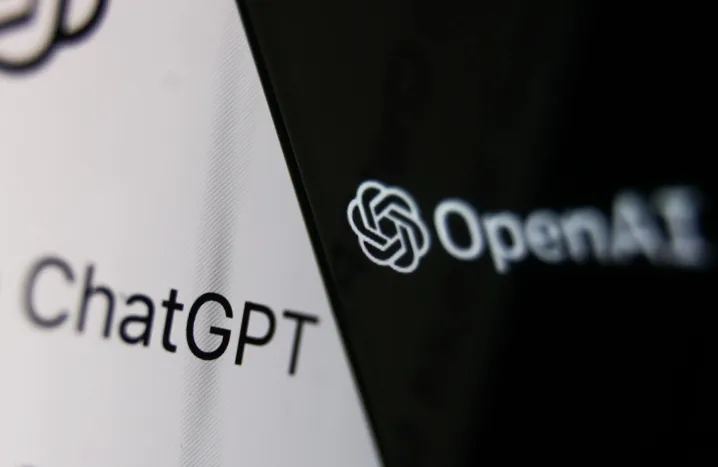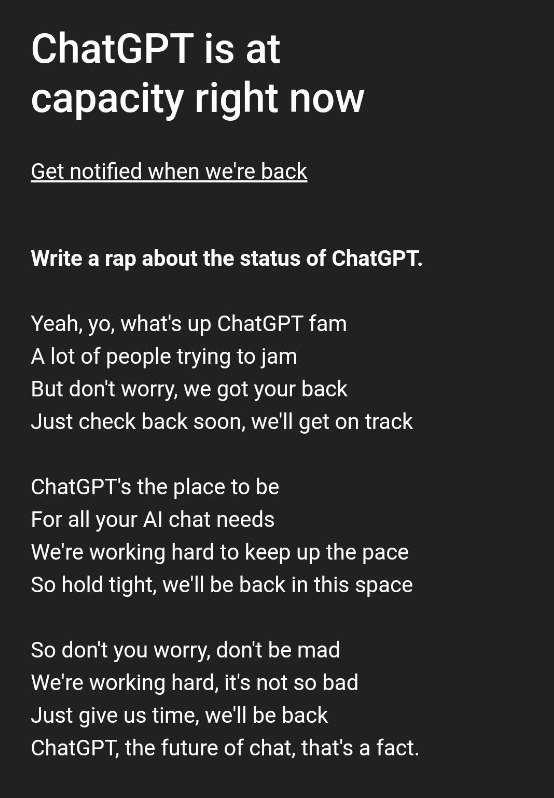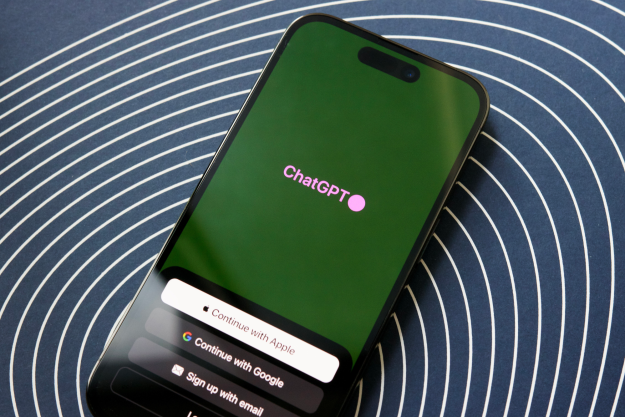AI-powered ChatGPT has recently been frustrating a sizable number of potential new users due to its own popularity, resulting in a very common “at capacity” notice that many people are facing.
Unfortunately, right now, you have to wait it out or come back at a time when less people are using it. You could also try out one of the best ChatGPT alternatives, including Microsoft’s recently announced ChatGPT integration in Bing.

OpenAI’s breakout chatbot star ChatGPT (released in November 2022) uses machine learning to generate responses from questions or queries entered by users. It’s been blowing people’s mind in how mature and chatty it is, while also raising a series of ethical problems that everyone is talking about.
But recently, the biggest issue has been access. For the last few weeks, reports have flooded in from those who wanted to create a new account or access the site on ChatGPT’s page couldn’t due to traffic congestion.
What visitors saw was a message that read: “Chat GPT is at capacity right now.” Basically, that meant that the website is in high demand and had reached its capacity for users per session and/or query load. The servers powering ChatGPT are very expensive to run, and OpenAI appears to have putting limits on that usage following the incredible explosion in interest.
- 1. Limerick rhymes
- 2. Talking like a pirate
Amusingly, instead of canned messages, ChatGPT has been doling out creative ways to relay its at-capacity status. So far, people have seen the chatbot communicate in limerick rhymes, a rap, and even in pirate-speak. While the crashes have been frustrating, at least visitors have found the messages entertaining.
At the time or writing, I had no trouble creating a new account and/or chatting away, but if you’re facing this error, the solution is quite simple: You just need to wait. Just click on the “get notified” link, enter your email address, and you should get an email when it’s reached your place in line.
Understand that ChatGPT is still a prototype, and its increasing popularity has been overwhelming the servers. People have reportedly been able to use the site after waiting for about an hour or less.
Beyond that, ChatGPT has recently announced that a premium tier version is in the works, called ChatGPT Plus. It’s not available yet, but you can now join a waitlist for the service, which will be a paid tier that promises better access and faster responses that costs $20 per month. This is a way for OpenAI to monetize the chatbot and give prioritized access to paid subscribers.
ChatGPT ‘at capacity’ workaround
You might still need to wait for ChatGPT to become available, but there’s a workaround you can try. Using a Virtual Private Network (VPN) can sometimes get past ChatGPT’s restrictions and allow you to use the service (we have a roundup of the best VPNs if you’re interested in trying).
It may not work for you, though. The reason a VPN might work is that it gives you a fresh session with ChatGPT and moves your virtual location. With a new session and location, ChatGPT could give you access.
You can also try using a different browser or a device, or flushing your browser’s cache. If you’ve been stuck on the “at capacity” page for a while, it’s possible you’re seeing a cached version of the website.
Finally, you can move away from ChatGPT altogether. There are several excellent ChatGPT alternatives making the rounds. Microsoft recently integrated the AI into Bing search, and you can sign up for the Bing Chat waitlist to get access when it’s available.
Editors' Recommendations
- Google might finally have an answer to Chat GPT-4
- Here’s why people are saying GPT-4 is getting ‘lazy’
- The world responds to the creator of ChatGPT being fired by his own company
- OpenAI’s new tool can spot fake AI images, but there’s a catch
- Bing Chat just beat a security check to stop hackers and spammers






